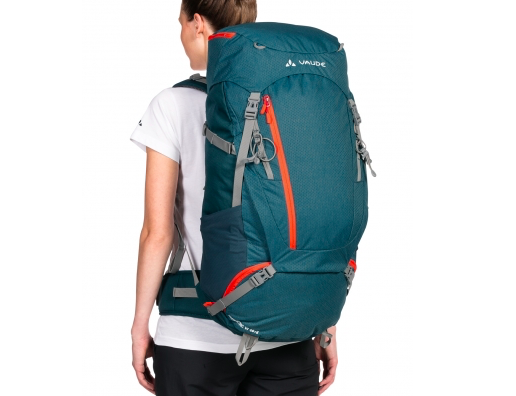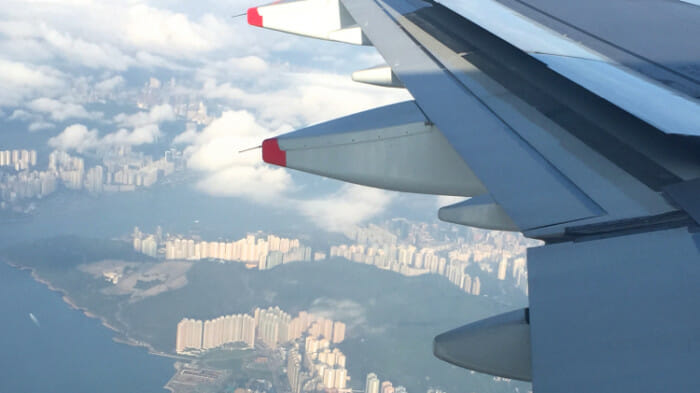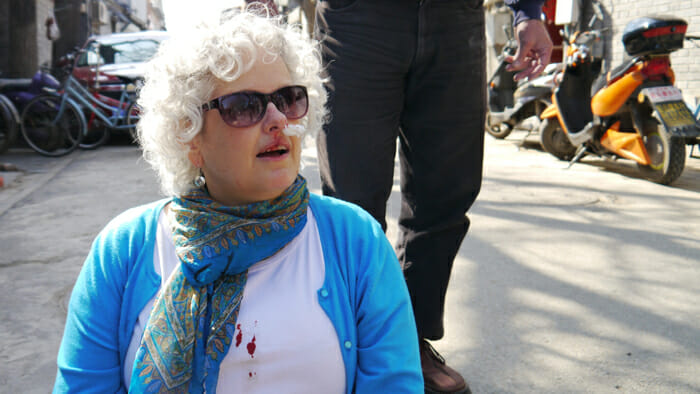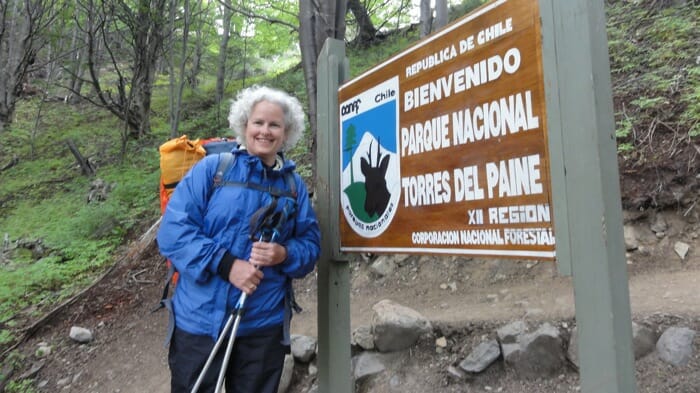

Get a backpack that fits your body and strength. We'll get to how to buy a backpack further down. I own a Vaude pack.
In the sixties and seventies, the popular hippie trail started in London, Paris or Berlin and ended as far away as Bangkok after traveling through the Middle East and South Asia.
Currently, backpackers traveling to South America follow what's known as the Gringo Trail, a far cheaper option than Europe today.
But the cheapest destination for backpackers that also has a well-developed infrastructure is Southeast Asia. It is currently the most popular destination among budget-minded backpackers.
But it doesn't matter how cheap a travel destination is, you still have to save the money to go. Have a read of our top post about saving money for travel here, How to Save Money for Travel: Top Tips to Save
Now, let's get into the details of how to plan your trip, buy your backpack and pack it.
How to Choose Your Backpacking Destination
Where you will go will be determined by your budget and your personal imaginings of the world. You will have your own countries in mind. Whether from tales from friends' travels, books you've read or movies you've seen, you will be inspired to go and explore specific places.To help you make up your mind, here are some posts you'll want to check out:
And, of course, there's our Destinations section with hundreds of posts organized by continent and then country. Finally, if you plan to go to an expensive destination, search "32 tips" and the name of the city in the search box in the upper right below our logo. We have great advice for budget travel to places like London, Paris, New York City, Sydney and Kauai.

Your adventure begins with a plan. (Photo is of the flight into Hong Kong.) If you've never flown before read How to Sail Through an Airport by Yourself: Tips for the Holidays and Make Flying Easy: 32 Tips.
How to Plan Your Solo Backpacking Trip
- Start with your budget. You need to know what you can spend to determine where you will go and what you will do. Once you have your the magic number, add it to the Solo Traveler Travel Budget spreadsheet to keep track of your projected spending. Read How to Plan Your Solo Travel Budget – On Any Budget.
- Create a folder for information you gather. This can either be on your computer or in the cloud on Google Drive. Your budget is likely the first thing that will go into your folder. Your flight confirmation, train tickets, etc. will go here. Create sub folders for each stop on your trip. Your hostel bookings will go into the folder according to destination. You can also create sub folders for research on each destination. A Pinterest board can also be a good tool for gathering research on your trip.
- Decide where you will go, when and for how long. This will be affected by your budget and how flexible you are with your time. If you go in high season which is usually summer, your money will not last as long as if you go in the shoulder or off-season.
- Create a price alert on flights. If you're flying to your destination, use FlightNetwork or Skyscanner to set up a price alert so that you'll be notified of any price drops on fares.
- Plan how you'll travel on the ground. Train and road trips. Here are some posts for you.
- Plan an itinerary. This will be affected by how long you have to travel. At bare minimum, I suggest at least three nights in any location but if you can stay longer all the better. As for your what you want to do when you get where you're going, make sure that you book the really popular activities that you absolutely want to do in advance. Otherwise, leave yourself lots of room to be spontaneous.
- Book accommodation - tentatively. If you're traveling a long time and not in high season you won't have to commit to booking every night of your trip however it is recommended that you book your first night at any new destination before you get there. Hostels are great. They're cheap, social, a fabulous source of information for travelers, and often have pub nights or other events. See below on how to book a hostel and read Sleeping with Strangers: The Hostel Experience.

Because "things happen," I highly recommend travel insurance. I did a face plant in China and, as a result, got to experience the Chinese healthcare system. Read I was a Guest of the Chinese Healthcare System.
Backpacking Solo and Essential Planning Details
- Confirm that your travel insurance is current. World Nomads is the only travel insurance company that I know of that allows you to buy insurance on the road. This is great if you forget to buy before you go - don't do that - but it's also great if you change your travel plans. Want to travel longer, extend your insurance. For details on why you need travel insurance and what to look for read Going Alone? Travel Insurance is a Must.
- Plan how you will manage your money. My preference is to use credit cards for most purchases as I travel. If you don't have a credit card read Book and Travel Without a Credit Card: Top Tips. Cash is also important whether you like credit cards or not. There are some countries where credit cards are not accepted widely. ATMs are your best source of cash, not the exchange booths at airports. Keep some backup cash hidden in your backpack. Read Protect Yourself from Pickpockets: Keep Cards & Cash Safe
- Organize your documents. I print out copies of my passport and visas (if required) and the confirmation emails for flights, accommodation, train tickets, excursions and anything else I’ve booked in advance. I also keep a copy of these in Dropbox so that I can easily access it from my phone should the paperwork go missing. If you don’t have Dropbox you can get 2GB of storage free. I always carry my passport on me.
- Know how you’ll manage your communications. Knowing how you’ll stay in touch with home or get emergency support is important. Free WiFi in hostels, coffee shops and libraries are certainly an option if you have your own phone, tablet or computer. But in a foreign country, there is more to think about. Read Use Your Phone Anywhere in the World: Free and Low-cost Options
- Know the risks before you go. Research the health risks at your destination and, if necessary, go to a Travel Clinic to get the proper vaccinations and medications. Check your government’s advisory website to learn what risks are involved in your chosen destination and register with the government as a citizen traveling abroad. Here are the pages for the US, Australia and Canada. The registration service is no longer offered to British Nationals. They are offered basic travel information here and asked to sign up for alerts.
How to Book and Stay at a Backpacker Hostel
I have almost always loved the hostels I've stayed at. How to book a hostel.- Book online or by phone. You can usually book either way but I prefer to book online so that I receive a confirmation email of my booking.
- Research and book. I use Booking.com to research my options and book my hostels. Since there's no extra charge for a refundable booking, I'll often book a number of hostels for the same night, secure a bed in each and then cancel the ones I don't want once I finalize my decision.
- Read reviews. Booking.com has reviews by people who have completed their stays at the hostel. Every time I check out of a hostel that I've booked through them I receive an email looking for an honest review which I happily provide since it will help other travelers.
- Know what your getting. Most hostels have kitchens though the two I stayed at in Japan did not. Breakfast? Coffee shop? WiFi? Parking? Laundry facilities? Know what your hostel has before your go.
- Women-only dorms. Mixed dorms are becoming very common. If you're not comfortable with this, watch when you book that you're getting the dorm gender you want.
- Use Google Streetview. To know whether you'll be comfortable with the location of your hostel, use Google Streetview. Will you feel safe walking down that street?
- Discount cards. Hosteling International membership gives you 10% off your booking through their site, plus discounts on many other travel services like Greyhound, Urban Adventures and World Nomads. You'll also find benefits by becoming a member of YHA (UK) and YHA (Australia).

Hiking in Torres del Paine in Patagonia, Chile. You can see my tent strapped to the side of my pack. The poles were a huge advantage in the park
The original content (article & images) is owned by Janice. Visit the site here for other interesting stories.

No comments:
Post a Comment